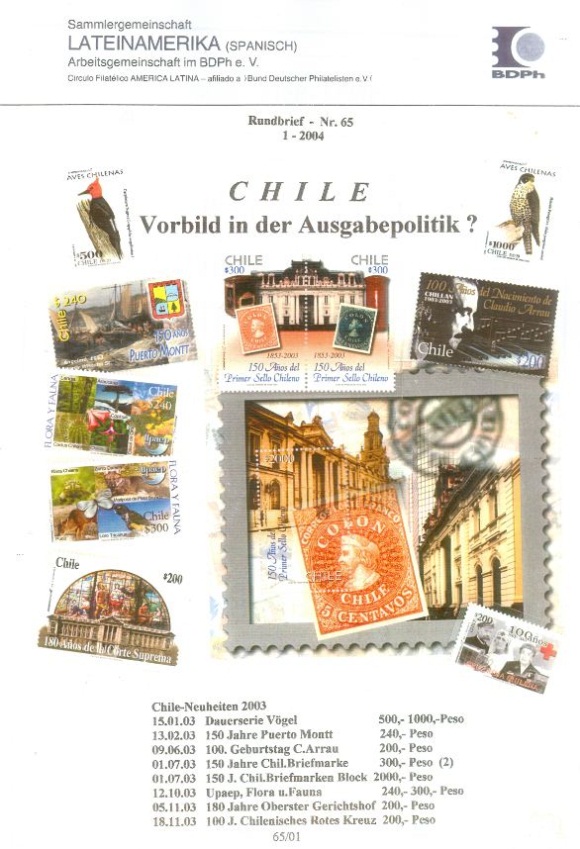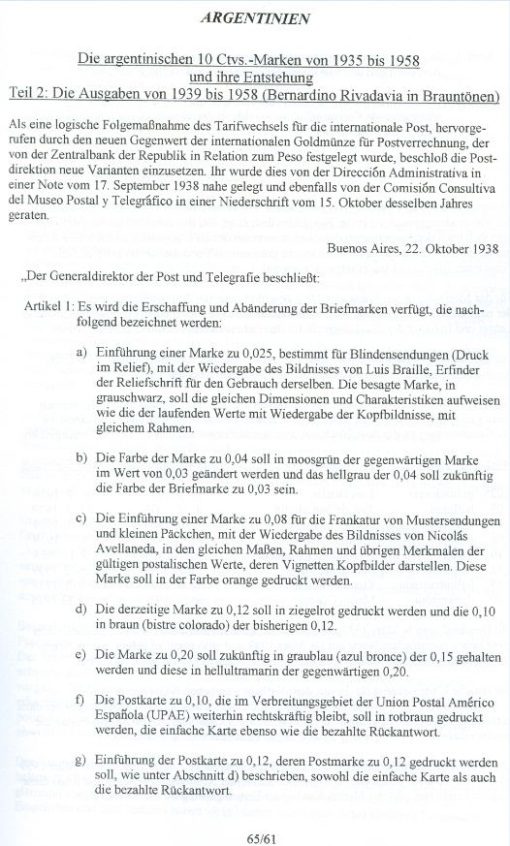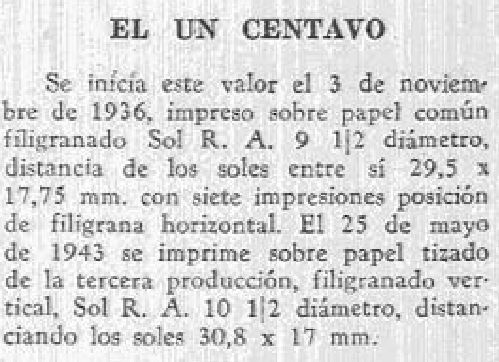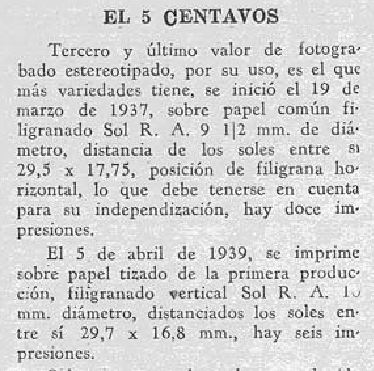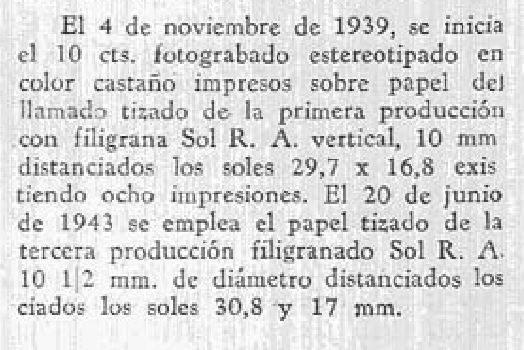Weske refers to 21 different types of paper - not all of them used for the 10c Rivadavia chestnut-brown.
Trying to see what the types of paper are we start in a numerical order:
No 2 = MI 3 the so-called Dutch paper or Stinnes paper of 1940.
No 3 = MI 4 the so-called Tela or Wiggins Teape paper of 1941-1945
No 6 late = MI 5 the so-called rayado vertical, trhe asyymmetrical parallel watermark of Wiggins Teape

No 8 = SF 1/2 the no watermark papers with visible grain!
No 9 = SF 3 the no watermark paper with no grain at all
No 10 = RR 1 the so-calleld rayos rectos difusos of 1942-1943
No 11 = RR 2 the so-called rayos rectos nitidos of 1948-1956

Weske states here that the Casa de Moneda still had quite a quantity of RR 2 paper left over by 1956. The use of it for the 3 pesos Evita was accidental, not planned. Commemorative stamps of Uruguay issued on 15.12.1956 and printed by the Casa de Moneda were a good opportunity to finally get rid of that paper!!!
to be continued ....
